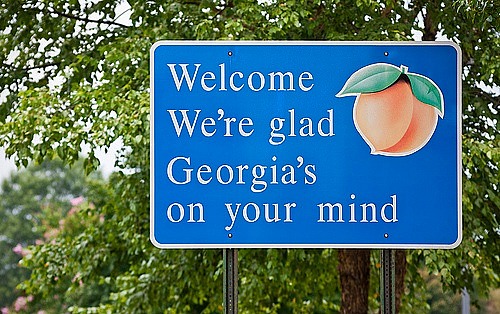How Much Does Car Insurance Cost?

When you are looking into covering your car, you will want to know how much does car insurance cost. Of course, this is not as simple as just giving one flat rate for anyone who drives. There are many factors that go into determining how much your rates may be. This, however, can give you a better general idea of what to expect.
Details That Determine How Much Does Car Insurance Cost
Everyone wants to save money, especially when it comes to car insurance. Rates can be out of control if you are not careful. There are plenty of stories about drivers who get themselves into a new car only to find out the rates for their auto insurance are going to be as bad as the car payments each month. If you are smart about it, though, you can find cheap car insurance policy rates.
The best thing to do is find little ways you could save money:

- Don’t settle for what you have – It used to be such a task to compare auto insurance rates. If you wanted to know how much does car insurance cost with different providers, you would have to contact each car insurance company yourself, give them personal details and wait for a call back to get all your quotes. This was time consuming and meant many companies had all that personal information just lying around. Many times not all of them would even call back, which meant you also had to follow up with them yourself. So it became common practice for drivers to settle for whatever they got back as their first quote. Not only that but often times drivers would never check to see if their rates could be better with a new company when it was time for renewal. A large percentage of drivers who are over paying for car insurance are doing so just because they didn’t compare rates and stayed with the company they picked years ago.
- Check if things have changed – One major way drivers make a mistake and overpay is by neglecting to check if certain things have changed on their own driving record. For example, if you have a policy with a provider for several years and had a ticket or accident when you first got your policy, it should come off your record in about three years. If your car insurance company can make more money from premiums with you paying rates that reflect the ticket or accident, they are not likely to bring your attention to the fact that this is off your record. Be proactive and make sure you have the best rates possible.
- Bundle coverage – If you have car insurance through one company, home owners through another and boat or motorcycle through yet another one, then you are probably paying more than you need to for all of them. If you combine all your policies and coverage to one company, you will more than likely see much better rates.
- Think safety over flashy – If you are buying a new car or one that is used but new to you, look for safe over sporty. It may not be as much fun, but you will be much happier when you get your premium rates. Cars known for speed tend to “attract” tickets or run a higher chance of being involved in an accident. Check on which colors are cheaper, look for a car that isn’t a convertible and make sure you can have side air bags over the flashy options. Also add anti-theft devices such as a car alarm, and watch the rates drop even more.
- Deductibles – When you want to know how much does car insurance cost, you will need to consider your deductible. The deductible is what you pay in the event of an accident as your part of the financial obligation to get the policy started. You can generally have a deductible as low as $250, but then your monthly premiums will be much higher. For lower rates, you could opt for a $1,000 deductible but then should be sure you could come up with that sum if a collision should occur.
- Your payments – There are several factors that go into how much your payments will be based on how your payments are set up. The new trend for billing is to go paperless. This is not only a great way to “go green” but can also save you some green. When companies don’t have to send out bills, it saves them money and they pass the savings on to you. Set it up so that you pay directly from you checking or savings account or for your credit card to be billed automatically instead.
Other Things to Think about
There are plenty of other ways, of course, to help lower the cost of your auto insurance bills. For another thing, if you pay your bill at the start every year for the entire year instead of per month you could save a great deal. At least set it up to be every six months or every quarter and you will still save money. Ask about other possible discounts such as military, student, vets or others. You never know how you could be saving money if you just check on what discounts are available.
Other factors that will influence your prices for car insurance are based on your state and whether or not the car is financed. Each state has different minimum guidelines for drivers in order to be legal on the street. This varies, so the state you live in will affect your premium rates. Financed cars also have different requirements for insurance, and you will only be able to find out by asking for quotes what it is you need.
Stop wondering how much does car insurance cost. Use nothing more than your zip code and find out for yourself today.
Average Car Insurance Rates by State

Are you carrying enough auto insurance to cover any and all expenses that can arise if you are in an auto accident? No matter what state you live in, you are required to carry a certain amount of auto insurance if you want to legally drive a car. Even if you do not own a car, it is a good idea to have at least a little bit of insurance, especially if you drive vehicles that are owned by other people. That way, they won’t have to worry about their insurance rates going up if you get into an accident. Average car insurance rates by state can vary as much as the insurance requirements, which is an excellent reason to shop around before buying your insurance policy.
Is the Required Minimum Enough Coverage?

If you get into an accident, there are going to be expenses. If you are the driver who is at fault in the accident, most of the expenses, both yours and those of the other driver, are going to be on your shoulders. When you only have the minimum amount of coverage that is required by your state, you will not be receiving any money to take care of your own expenses. This is liability coverage only, and it only pays for the expenses of the other driver. This is why it is a good idea to have additional coverage.
Most people think that they simply cannot afford to have extra auto insurance. The average car insurance rates by state can vary, and if you do your homework, you may find that there is a lot of competition between insurers, and that you can get a pretty good deal on full coverage. When you come right down to it, it really doesn’t cost a whole lot more to have extra coverage anyway. It is a small price to pay now when you compare it to the expenses you could be facing if you are involved in an accident.
What are the Auto Insurance Requirements in Your State?
If you do not know exactly what you are supposed to have for coverage, you need to find out. It may be that you are getting more coverage than you need, and that you are paying a lot more than you should be. You can contact your local Department of Motor Vehicles office to find out what the requirements are for your state, or you can ask your insurer. If you currently do not have insurance coverage and you are getting quotes, make sure that this is one of the questions you ask.
How Auto Insurance is Broken Down
Usually, the minimum amount of insurance that you are required to have is liability insurance that covers the other driver if you are at fault in an accident. You need to have bodily injury and property damage coverage. There is a certain amount for injuries to one person, and a different amount for injuries to more than one person, up to a certain limit.
In addition to liability insurance, you also have the option to purchase additional coverage that will pay for your own expenses. With full coverage, you will have collision and comprehensive coverage, as well as insurance against uninsured or underinsured motorists. Your insurance will pay for things like damage or destruction due to theft or vandalism, fire and other events. Damage due to severe weather will be covered. You are even covered if you are a passenger in another vehicle. This coverage extends to your children while they are riding school buses.
How to Get the Best Auto Insurance Rates
If you want to get the best rates for your auto insurance so you can make sure you have full coverage and not just the minimum amount required by the state you live in, you need to shop around. This is a big purchase, and you need to make sure that you are going to be getting the best rates possible. After all, average car insurance rates by state can vary, and so can the rates between various insurers.
We can get you free quotes, and it only takes a few minutes of your time. You just have to fill out a short questionnaire about your insurance needs, and make sure to include your zip code. We take your information and get many free quotes from insurers in your area. It’s the easiest way to get the best auto insurance rates and make sure that you are covered for anything.
Average Car Insurance for Doctors

Are you paying too much for your auto insurance? The rates throughout the country vary from state to state, and many insurance companies like to take advantage of this and charge the highest rates that they can get away with charging. Even many health professionals find that the average car insurance for doctors is often a lot higher than it should be. Why is this anyway? It is not like this is professional liability that all doctors must have. It is just auto insurance.

One of the biggest reasons why doctors sometimes have to pay higher insurance rates is because they are often on the go. They are traveling to and from their offices and hospitals. In some extreme cases, they may even be driving to patients’ homes (of course, this is not something that is done like it was in the past).
Unfortunately, this makes it so that many people can’t afford the coverage they need, and a lot of people go out on the roads anyway. This of course is dangerous, not only to themselves, but to any other drivers out there. If these uninsured or underinsured drivers have accidents, you can be sure that you are going to end up paying most of your own expenses.
What is a Fault State?
Most states are fault states. This means that one driver must be found responsible when there is an accident. The majority of US states have adopted this type of system, which is also known as a tort liability system. When there is an accident in one of the fault states, insurance companies are required to pay for damages to the non-responsible party, to a certain limit.
What is a No-Fault State?
All US states require drivers to carry a minimum amount of liability insurance. This will cover drivers for expenses incurred by other drivers if the insured is at fault in an accident. Every state has a different requirement. Some states are no-fault states. This means that it does not matter which driver is at fault, the insurance coverage will take care of it. These states are:
- Florida
- Hawaii
- Kansas
- Kentucky
- Massachusetts
- Michigan
- Minnesota
- New Jersey
- New York
- North Dakota
- Pennsylvania
- Utah
If you live in a no-fault state and you are involved in an auto accident, there is no need to prove that you were not at fault. You can still make an insurance claim and receive money for damages. Your insurance company will pay for a certain amount of medical bills, lost wages and rehabilitation expenses. In no-fault states, the injured party is not able to sue other drivers for pain and suffering or emotional distress. When you are trying to find out about average car insurance for doctors or anyone else, one of the first things you need to do is find out if you live in a no-fault state. This can play a huge role in the type of coverage you decide to get.
What Coverage Should You Have?
You can choose to just have the minimum amount of auto insurance that is covered by the state you live in, or you can choose to purchase additional coverage, which many drivers do. When you are not living in a no-fault state, the minimum insurance you must have is just liability insurance, and only covers damages for other drivers if you are at fault in an accident. If you can afford it, you should try to have additional coverage to protect yourself. After all, if the other party has received damages, you can be pretty sure you will too, and you need to be able to pay for them.
Get Quotes to Make Sure You’re Not Paying Too Much
Whether you already have auto insurance, or you are purchasing it for the first time, it is always smart to shop around to see which insurers are offering the best rates. You need to consider a number of things when it comes to insurance payments. For instance, you can choose to have a lower premium, but if you are in an accident, you will have to pay a large deductible. On the other hand, you can have a lower deductible and pay a higher premium.
We can get the quotes you need to help you decide. We can search our databases to get the best quotes from many insurers in your area. Whether you are looking for average car insurance for doctors or you are just an average Joe, we can help you get the best rates.
What You Need to Know about the Average Cost of Insurance Each Month

Should you pay your car insurance by the year or in smaller sums spread throughout the year? That is one of the questions that you must answer whenever you start shopping for new coverage. Before you make that decision, there are a few considerations regarding the cost of insurance each month. You also should keep in mind that it is about tradeoffs as well.
Reasons You Might Choose to Pay for Insurance Each Month
There are some benefits to paying for your insurance every month, which can include:

- Better ability to budget your expenses. You already know what you are paying and when it is due.
- A lowered amount. Paying your insurance in six month terms can be out of the reach of some budgets, so breaking it down to monthly payments can allow for better coverage.
- It allows for more flexibility. If you need to make a change to a policy or even decide to go to a new company, you can do so much more easily with a monthly payment plan than you could if you pay six months or longer in advance.
Why It Might Not Be a Good Idea
There are some drawbacks to paying your insurance each month as well. These include:
- It can increase the cost of your insurance over the long term.
- If you miss a payment your insurance can lapse.
- The cost of your insurance might go up or down based on certain circumstances during the previous month.
- You might feel like you are not able to shop for quotes to take advantage of new laws or other benefits.
Making Your Monthly Insurance Cost More Affordable
If you do plan to pay your insurance on a monthly basis, there are several ways that you can make sure that you are still getting the best price for your coverage. These ways include:
- Negotiating for a reduction or waiver of the monthly service fees. While this may not be a widely advertised option, there is a small chance that the provider will allow it.
- Shopping for no frills insurance from companies that eliminate many of the major expenses of insurance to further lower the overall cost.
- Only buying the right level of coverage.
- Skipping the fees by having the money automatically transferred from your bank account. Automatic bill paying is typically a service that is beneficial to both parties.
Shopping for Quotes Is Your Key to Good Coverage and Prices
Before you start an insurance policy, it is important that you consider whether or not you have found the absolute best price for that coverage. If you are only buying minimum insurance, then you should know what the national averages for coverage are to use those amounts for your starting point. Your quote shopping should include:
- At least three quotes from different companies. In addition, ask each to give you different coverage quotes so that you can choose the best service, the best coverage and the best price.
- Remember that a quote is not binding. There are many things that can make your actual insurance cost higher or lower that will not be evident during the initial quoting period. For instance, you might find that your credit report is driving the insurance cost higher, but that would be something you might not be aware of when you call or click on the website.
- Make sure that you are being truthful when you are asking for your quote.
How Often Should You Shop for Quotes for Insurance?
If you are paying for your insurance on a monthly basis, you can make a number of changes from month to month. However, there are a number of other instances when you might need a new quote. Always ask for insurance quotes when your circumstances have changed including:
- You get married or divorced.
- One of your children reaches driving age.
- Your driving child moves out of your household.
- You are buying a new car.
- You have paid off a loan on your car.
- You have refinanced a loan on your car.
- You are moving to a new location.
- You add a safety or security enhancing feature to your vehicle.
- You move into a new age category.
Of course, if you simply feel like shopping for an insurance quote, you can do so at any time.
If There Is a Problem with Your Monthly Insurance Premium
There are a number of times where a payment is just not fitting into the budget like it is supposed to. While it might be embarrassing to admit that you are struggling, it is important to keep ahead of your insurance payment so that you do not lapse. Keep these things in mind:
- A late payment can result in a late fee. If you go past ten days, your insurance can lapse. The provider is not obligated to reinstate your insurance at that time, which can make getting new coverage difficult.
- If you send in a check for the payment and it is returned, you will incur the late payment from the insurance company plus overdraft fees from the bank. That amount can quickly add up- in some cases as much as $30-50 per bounced check.
- Continually not paying your insurance on time can possibly lead to the insurance company dropping you from their coverage.
As soon as you know that there is a problem with making a payment, call the insurance company and ask for solutions to the problem. If it is a once only struggle, the company may defer the payment for that month, usually delaying it for two weeks or so. In addition, they might break the payment into two rather than expecting it all at once. It is important to be honest and let the insurance company know what is happening.
Keeping Track of the Average Cost of Insurance Each Month

Insurance cost can seem extreme, especially when viewed as a yearly or biannual cost. It might seem like a good idea to pay your insurance on a monthly basis, however there are some drawbacks to doing that as well. If you cannot afford a lump sum for your insurance, there are ways to reduce the cost of insurance each month and to make it work better for your budget.
What Is the Average Cost of Insurance Each Month?
There is no universal insurance cost. Coverage types vary from state to state. Policies vary from company to company. And there are a number of variables that have to be figured into the equation to give each person their insurance cost. The national average for insurance in 2009 was $1,736, which works out to $145 per month.
The Nine Most Expensive States for Insurance in the US
These are the nine most expensive states in the US for insurance premiums. They are:

- New Jersey
- The District of Colombia (Although not a state, this area has the second most expensive insurance costs in the nation.)
- New York
- Louisiana
- Maryland
- Delaware
- Rhode Island
- Michigan
- Alaska
In some cases, it is the insurance industry itself that drives the cost higher. In others, it is the potential for serious weather risks that may increase cost dramatically. In Louisiana, for instance, the risk for hurricanes and flooding can increase the cost of insurance each month.
The Lowest Cost Insurance in the US – Insurance in these states are the lowest in the nation.
- Illinois
- South Dakota
- Iowa
- Arkansas
- Vermont
- Hawaii
- North Dakota
- Nebraska
- Ohio
Ways to Make the Monthly Insurance Cost More Affordable
While it might be daunting to come up with the money to pay for your insurance six or twelve months at a time, monthly insurance payments can be less appealing than you might think. For most companies, monthly insurance bills mean more administrative costs, which result in fees for the customer. Instead, you can consider:
Paying either six or twelve months but making it more doable. Divide the total amount by your choice of monthly payment amounts and then put that amount into a savings account or onto a re-loadable, no fee credit card. With the savings account option, you earn interest on the amount, while the fee free credit card prevents you from being overdrawn as well as from other problems. It is a good idea for online transactions as well.
Other ways to reduce your insurance cost each month:
- Reduce insurance on older vehicles. It makes no sense to pay more in premiums than a car is worth in terms of value.
- Make sure that you are always taking advantage of every available discount that you are eligible to get.
- Eliminate additional services that you do not need. For instance, do not pay for roadside service through your insurance if you are already part of a motorist club.
Before You Change Insurance Providers
Choosing insurance should be based on service and rates, not about how much you like the insurance agent. However, if you are really thrilled with the service but not the premiums, discuss that fact with the insurance agent.
- Be upfront with your current provider; tell them that you are going to start shopping for quotes. Let them give you a quote -hopefully they can beat the current price.
- If not, look for the right coverage for your needs. That does not necessarily mean the same level of coverage, especially if the car is older or has been paid in full.
- Insurance rates change for a number of reason, so always look for quotes rather than just renewing a policy at the end of each term.
The Perfect Insurance
There is no such thing as the “perfect” insurance for every person, but there are ways to make sure that you are getting the coverage that comes pretty close to it. Here are some things to look for to get your right fit:
- The right coverage – Not too much coverage for the vehicle but enough to protect your family in the event of an accident. Remember, the state minimum is enough to keep you legal, but may not be enough to protect you.
- The right premium – Insurance can be wonderful- but it will not matter how great a policy it is if you cannot afford it.
- The right service level – If you want to deal with a person, then choose a local insurance agent. If you prefer online convenience, you can choose that option. Most insurance companies have both- you can deal with an agent face to face if you would like but go online when you need to do so.
- The right terms – If you want to pay monthly, you can do so. Not all insurance companies or policies are available for monthly payments. Not all policies are available as a yearly term either. Discuss this with the agent when you are buying your policy.
Make changes to your policy whenever there are changes to your situation including marital status, age, occupation, age of the vehicle and additional drivers in the household.
Ask for Discounts
Finally, before you start looking for quotes, make sure that you are aware of all of the potential discounts you might be eligible to receive. Make a list and ask your agent as you go. These might include:
- Certain occupations
- Membership in certain types of organizations and clubs
- Veteran status
- Good student
- Good driver
- The type of car
- The safety equipment in your car
- Good credit history
- Paperless discounts
- Paid in full discounts
- Having more than one time of insurance policy with the same company
- Low mileage per year
- Safe driver courses
- Living in safer areas
- Agreeing to pay a higher deductible amount on your insurance
These discounts are not available in all situations. In addition, there might be other types of discounts not listed here.
Average Car Insurance in Georgia

Georgia is not an at-fault state. This means that if there is an auto accident, someone must be proven to be at fault, and their insurance coverage must pay for all damages that are a result of the accident. If you are looking for average car insurance in Georgia, it is important to be sure of all of the requirements to make sure that you have what you need to be legally on the roads. If you are found to not have the proper amount of insurance coverage, it can result in fines, suspension of driving privileges, and more.

Georgia Auto Insurance Requirements
If you live in Georgia, you are required to carry at least $25,000 of bodily injury liability insurance for every injured person in the accident, up to a total of $50,000 per accident. You are also required to carry a minimum of $25,000 in property damage liability coverage. This is the basic coverage the state allows, and it is often referred to as 25/50/25 coverage. As of January 1, 2009, drivers are also asked to carry uninsured/underinsured motorist coverage. This is not a requirement, but it is a good idea to have it just in case. There are just too many people on the roads who are not carrying enough, or any insurance, and if you are in an accident with one of these drivers, you could end up with a lot more expenses than you can really afford.
More is Better
The more insurance coverage you have, the better off you are going to be if you end up having an accident. No matter who is at fault in an accident, both parties are going to end up with expenses in one way or another. Having additional coverage over and above the average car insurance in Georgia will help you if you do have an accident and end up with a lot of bills, medical and other expenses, as a result. Some of the additional coverage that you should consider adding to your policy if you don’t already have it includes:
- Comprehensive Coverage – What would happen if a tree limb were to fall on your vehicle and cause a lot of expensive damage? Would you be able to afford to pay for the repairs? Auto repairs, especially body work, can cost a lot of money. If you have comprehensive coverage, you won’t have to worry about this. This type of coverage will pay to repair or replace your vehicle if it is damaged due to certain circumstances. Some of the things that are covered include damages caused by severe weather, theft and vandalism.
- Collision Coverage – If you are at fault in an accident and you have damages to your vehicle, your collision coverage will pay for repairs up to a certain amount depending on what you have chosen for your policy. As a rule, collision and comprehensive coverage are put together in full coverage auto insurance policies.
- Personal Injury Protection (PIP) – If you are lucky, you will not be injured as a result of an auto accident. But if you are injured, you will need to be able to pay for all of your medical expenses. If you are at fault in an accident, you can’t expect your liability insurance to take care of it, nor can you expect the other driver to pay for any of your expenses. If you have personal injury protection, you can rest assured that you won’t have to pay all of your medical expenses out-of-pocket.
Georgia Drivers Receive Better Rates
Did you know that the average auto insurance premium paid by drivers throughout the United States is about $1,600 annually? If you live in Georgia, you can expect to pay a little bit less than this. The average car insurance in Georgia usually costs about $1,568 a year. Of course, these are just general numbers, but it does give you an idea of what you can expect to pay for your auto insurance coverage. While this may not seem like much of a savings, it can add up, and if you are getting additional coverage, you may find that you can save even more money. In the past few years, Georgia drivers have seen their rates drop.
Shopping Around for the Best Insurance Rates
You’ve probably seen all of the television commercials for national insurers, and they all say that they are offering the best rates on their insurance products. The thing is, they never actually say what their rates are. If you simply trust one of these companies and don’t see what they others are charging, you will never really know whether or not you actually are getting the best rates. It is important to shop around to really know that you are getting the best prices for auto insurance. If you are looking for the rates for average car insurance in Georgia, you can request that you just get the rates for the minimum required amount. It would be even better to get quotes for this amount, as well as for what it would cost to have additional coverage.
What you need to do is sit down and figure out exactly what you think you need for auto insurance, and what you can afford to pay for it. Then, you can contact the various insurers to see what they are charging. If you want to save a lot of time and effort, you can let us do a lot of this work for you. Once you have decided the type of coverage you want, simply let us know, and we will search our databases to get free quotes from insurers in your area. All we need is some information about your insurance needs, and your zip code.
Check us online to get the best rates for average car insurance in Georgia, as well as the rates for additional coverage. You may find that it is not nearly as expensive as you thought, and that you can afford to have full coverage.
Average Cost of Ford Car Insurance

Choosing a new vehicle can be an exciting event and using the average cost of Ford car insurance can help you make a choice. It is always a good consumer move to get an idea of what kind of insurance premiums you may be looking at, when it comes to the new vehicles you are considering. Too many drivers make the mistake of getting into a new car loan and then trying to secure the auto insurance coverage for it.

For new cars, you could be looking at car insurance rates as high as your car loan. Of course, this is usually only true for those who are younger or considered high risk for some reason. Yet the type of car, price of the car and even the color of the vehicle are all things that could affect your rates. Find out the average cost of Ford car insurance before signing up for the new Ford. If nothing else, you can always start with a well-preserved used Ford vehicle and work up from there.
So What is so Great About Ford?
If you are looking for the average cost of Ford car insurance you are already aware of what makes this brand worth owning and driving. Safety, durability, dependability and price are all popular reasons for making this brand of car so in demand. Not to mention Ford continues to improve upon features like look, style and design to stay competitive and even move ahead of the competition with several of their models.
Some of the Ford vehicles that made this year’s Most Popular Vehicles on Edmunds.com year are:
- For those seeking a dependable truck to suit their needs the Ford F-150 remains an all time classic. This model of Ford truck has been a popular choice of loyal truck drivers and Ford supporters for years.
- For those ready to make the transition to a crossover vehicle the Ford Escape is a sought after choice. The crossover in general has gained a great deal of popularity since its introduction and is sure to only increase in demand. Crossovers are perfect for drivers who want more room and power than a car and less bulk than a truck or a full-size Sports Utility Vehicle.
- If what you want, is a midsize family sedan than you would be among those who researched the Ford Fusion on Edmunds.com. Stylish and well built this is the perfect vehicular addition to any family.
- Also on the list was the Ford Edge, which is classified as a midsize crossover SUV.
- Even those looking for a sports car may be pleased to find an affordable and attractive choice with this year’s Ford Mustang. Like the F-150 for trucks the Mustang remains a time honored classic for sports cars.
Regardless of what your needs you can more than likely find the perfect Ford vehicle to meet your list of requirements and qualifications. Getting those insurance rates for it is as easy as typing in your zip code, literally. Make this your first step towards getting the average cost of Ford car insurance and be informed to make a choice.
Average Car Insurance in North Carolina

No matter where you live in the US, you are required to meet the minimum liability insurance requirements for the state you live in, if you want to be able to drive a vehicle legally. Just as with every other state, North Carolina has its own specific requirements for auto insurance, and if these requirements are not met, it can result in the loss of your driving privileges and your vehicle registration for a certain period of time. This is something that is just not convenient for most of us, so it is important to always make sure that you carry the average car insurance in North Carolina.

What Do You Need?
Every driver who owns a vehicle must carry a certain amount of liability coverage or they can’t have their vehicles on the road legally. Drivers in North Carolina must carry bodily injury and property damage coverage (BI/PD). This type of coverage will take care of most of the expenses of the other party in an accident if you are the driver who is at fault. After all, if you cause damages, you are required to pay for them. The minimum liability coverage drivers in North Carolina need to have is $30,000 per person, $60,000 per accident, and $25,000 for property damage. This is also known as 30/60/25.
- In addition to the above coverage, average car insurance in North Carolina also must include protection for uninsured and/or underinsured drivers. This is necessary if you are in an accident and the other driver is not carrying enough, or any insurance which happens all too frequently. This is known as UM/UIM coverage and you must carry a minimum of $30,000 per person and $60,000 per accident.
You WILL be Reported if Your Policy Lapses
If your insurance policy lapses, your insurer is required by law to inform the North Carolina Department of Insurance and the Division of Motor Vehicles. Even if your policy is only cancelled temporarily, your insurer must report it. This is why it is so important to make sure that you always have your insurance payments in on time, and that you have an up-to-date insurance card in your vehicle at all times.
What Happens if Your Policy Lapses?
Once the North Carolina Division of Motor Vehicles has been made aware of the fact that your insurance has been cancelled or has lapsed, the Division will send you a notification. This is known as an FS 5-7 Notice, and you will be requested to provide your insurance policy information within 10 days from the date that is on the notice. If your insurance has lapsed, you must provide a re-certified Certificate of Insurance along with your FS 5-7, which you can get from your insurer. You will also be required to pay a monetary penalty for allowing your policy to lapse.
Additional Coverage
Just because you are required to have a certain amount of liability insurance, it doesn’t mean that you can’t, or shouldn’t have additional insurance coverage. The average car insurance in North Carolina that many drivers have includes coverage over and above the required amount. If you can afford it, this is something that you really should consider, because the more coverage you have, the better off you will be financially if you do end up having an accident. Some of the additional coverage you might want to consider having include:
- Personal Injury Protection (PIP) – This is also referred to as no-fault insurance. This type of coverage will take care of any of your own medical bills if you are in an accident, and it does not matter whose fault the accident is.
- Comprehensive and Collision – Many things are not covered by your state-required liability insurance. For instance, if your car is stolen, or damaged due to vandalism, comprehensive insurance will cover your replacement or repair costs. This coverage is also used if vehicles are hit while parked, or damaged due to severe weather, items falling on them, etc.
Many other things are not covered by basic insurance policies, and it is wise to have these added on. For instance, you may want to include insurance for towing and rental vehicles. If you were in an accident or break down on the side of the road, you are probably going to need to be towed, which can get expensive. If you have to rent a vehicle while yours is being repaired after an accident, you can have coverage for this as well.
Legislators Looking at Insurance Changes
A number of proposals have been put out there about changes some would like to see in the North Carolina insurance requirements. For instance, in 2011, it was proposed that rates be lowered for high risk drivers. Supporters of the higher rates for high risk drivers don’t agree that this is necessary, while various insurance companies are undecided. The problem with the proposal is that it would raise the rates of other drivers who are not high risk, which they do not feel is fair.
Another proposed legislation would get rid of the Rate Bureau, and let insurers decide whether or not they want to increase their rates by as much as 15 percent per year without having to apply for permission to do so. Currently, the rates on insurance premiums in North Carolina are some of the lowest in the United States. The system is going to be studied this year to decide whether or not any changes are actually needed.
Getting the Best Rates
Even though you are probably already getting good rates on insurance premiums since you live in North Carolina, there are ways that you can get even better rates. Having an excellent driving record is one way. You can also lower your rates by taking a driver training course. You also need to make sure that you get quotes from a variety of insurers, as they are not required to charge the same rates for insurance products. We can get free quotes for you, and you just have to fill out a short online form letting us know what your requirements are. Then you can see about getting better than average car insurance in North Carolina.
Average Cost of Insurance for Chevy

When trying to find affordable auto insurance you may realize that much of the rate differences depend on the type of car you drive. Of course, it is not always the brand that determines this, it could also be factors like:

- Age
- Color
- Model
- Safety features included
- Anti-theft features included
However, some carmakers are known for resulting in lower rates of car insurance because of their standard safety features, lower standard costs and reputation for being dependable. Results from crash tests and other details go into deciding what certain types of car insurance rates will be. If you have or are considering this type of vehicle, you may be wondering about the average cost of insurance for Chevy.
Things to Keep in Mind for Average Cost of Insurance for Chevy
Some things are true when it comes to auto insurance coverage regardless of the brand. For example:
- Older cars will cost less to insure. Of course, this may also be because if the car is old enough to be of low enough value to cover with just liability instead of full coverage than your rates will be lower.
- The color of the vehicle may still play a factor in what your rates are like. When in doubt check with your policy provider concerning the car you are considering and your color choices. If it will save you a great deal to go with blue over red or white then take what will help lower your average cost of insurance for Chevy vehicles.
- Load up on safety and anti-theft features. Skip the extra DVD player and get extra features like this when possible. If you are going to pay for extras make them count. These features help prevent injury or theft and help lower your car insurance premiums.
So what are some great choices of vehicles to consider to shop for when it comes to the average cost of insurance for Chevy?
- As far as crossovers go, the Chevrolet Equinox is on this year’s Most Popular Vehicles List.
- For smaller cars, the Chevy Cruze is also on this same list.
- The Most Popular Vehicles List by Edmunds also has the Chevrolet Camaro on it for those who simply refuse to give up sporty fun and luxury.
- Looking for a truck? AutoTrader.com has the Chevrolet Silverado 1500 on their top 10 list for this year.
These are of course just some of the popular choices for this year. As far as Chevy goes there are plenty of other choices including new and used vehicles. You could be looking for practical and small, full size SUV action or a sporty car for you and just one other person.
When it comes to looking for the best auto insurance rates around it is good to know you can get them all by using just you zip code to get started. For the average cost of insurance for Chevy, find out what you can expect.
Average Car Insurance Rates Illinois Drivers Pay

If you live in Illinois, consider yourself lucky, because average car insurance rates Illinois drivers pay is lower when compared to the national average. In 2009, the average rate in Illinois was $1,173, while the national average was $1,790 (nearly a $600 difference). No matter what state you live in, there are going to be certain insurance requirements. In Illinois, you need to have the following for coverage:

- Liability for Bodily Injury – A minimum of $20,000, with a limit of $40,000
- Liability for Property Damage – A limit of $15,000
- Uninsured Motorists for Bodily Injury – There is a $20,000 to $40,000 limit
- Underinsured Motorists for Bodily Injury – If you have uninsured motorist coverage, you will probably also need to have this coverage
In Illinois there is a tort system that requires anyone who is at fault in an accident to be responsible for all of the damages received by both parties. Illinois state law requires all drivers to carry uninsured/underinsured coverage, which is protection if you are in an accident caused by someone who does not have any or enough coverage of their own.
Other Things that Affect Insurance Rates
Average car insurance rates Illinois drivers must pay can vary depending on a number of factors. Some of the things that can have an effect on your insurance rates include:
- Age – Teenagers and young adults have the highest insurance rates, as they are considered to be high risk drivers. Those who are in the 27-54 have lower rates, and these rates get even lower for people ages 55-64 have the lowest rates. After age 65, rates start to climb again, and some insurers will even refuse to provide coverage.
- Credit Score – This may seem strange, but if you have a less than perfect credit score, you may be faced with higher insurance rates. This is because you are seen as a bad financial risk.
- Gender – This doesn’t matter much once you are older, but for young adults, men will receive much higher rates than women because they are seen as being more reckless when driving.
- Previous Claims – If you have made insurance claims in the past, it is going to affect your rates.
- Driving Record – Having a clean driving record with no DUI or DWI convictions can help to lower your rates.
- Driver’s Training – You don’t have to be a teenager to benefit from a driver training course. In many states, taking these courses can help to lower insurance premiums because insurers know that you have been taught the skills needed to be a safe driver.
Getting quotes is the best way to make sure that you are getting the best rates. You can go online and fill out a form telling us what type of coverage you want to have. Then, we use your zip code to get quotes from a variety of insurers in your area. This way, you can try to do better than the average car insurance rates Illinois drivers pay.

